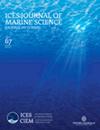Assessing the value of harmful algal bloom forecasts in the Pacific Northwest
IF 3.4
2区 农林科学
Q1 FISHERIES
引用次数: 0
Abstract
Over the past three decades, fisheries and livelihoods on the coasts of Washington and Oregon have been severely impacted by the presence of harmful algal blooms (HABs) that produce domoic acid, a neurotoxin that accumulates in shellfish and endangers public health. Among others, recreational razor clams and commercial Dungeness crab fisheries along the Pacific Northwest (PNW) have been negatively affected, jeopardizing the economies of coastal communities that depend on tourist revenues and income generated through visits of harvesters in the region. The PNW HAB Bulletin, launched in 2008, publishes forecasts on incoming HAB events, which has enabled managers to increase toxin monitoring in high-risk locations and proceed with selected harvesting at safe beaches and delays or closures of fishing seasons, as required. In light of the value of the HAB Bulletin to local managers and communities and the occasional challenges of securing sufficient resources to ensure its continuation, this study attempts to assess the value of information (VOI) for the predictions provided by the Bulletin. Results of the study show that ongoing financial support of the Bulletin is economically justifiable. The value of HAB forecast is positively related to three primary factors: the frequency of HAB events, the precision of forecast, and the number of social and economic sectors benefiting from the forecast. The expected increase in HAB frequency and intensity due to climate change, coupled with advancements in forecasting accuracy through technological development, is anticipated to enhance the value of the forecast program.评估西北太平洋有害藻华预报的价值
在过去的三十年里,华盛顿州和俄勒冈州沿海的渔业和生计受到了有害藻华(HABs)的严重影响,有害藻华产生的多莫酸是一种神经毒素,会在贝类中积累并危及公众健康。其中,西北太平洋(PNW)沿岸的娱乐性蛏子和商业性邓杰内斯蟹渔业受到了负面影响,危及了依赖旅游收入和该地区渔民来访创收的沿海社区的经济。2008 年推出的《西北太平洋有害藻类繁殖公报》发布了对即将发生的有害藻类繁殖事件的预测,这使管理人员能够加强对高风险地点的毒素监测,并根据需要在安全的海滩进行有选择的捕捞,推迟或关闭捕鱼季节。鉴于《有害藻类繁殖公报》对当地管理者和社区的价值,以及为确保其继续存在而在获取足够资源方面偶尔遇到的挑战,本研究试图评估《公报》所提供预测的信息价值(VOI)。研究结果表明,对《公报》的持续财政支持在经济上是合理的。有害藻类繁殖预报的价值与三个主要因素呈正相关:有害藻类繁殖事件的频率、预报的精确度以及从预报中受益的社会和经济部门的数量。由于气候变化,预计 HAB 的频率和强度都会增加,再加上技术发展带来的预报精度的提高,预报计划的价值预计会提高。
本文章由计算机程序翻译,如有差异,请以英文原文为准。
求助全文
约1分钟内获得全文
求助全文
来源期刊

ICES Journal of Marine Science
农林科学-海洋学
CiteScore
6.60
自引率
12.10%
发文量
207
审稿时长
6-16 weeks
期刊介绍:
The ICES Journal of Marine Science publishes original articles, opinion essays (“Food for Thought”), visions for the future (“Quo Vadimus”), and critical reviews that contribute to our scientific understanding of marine systems and the impact of human activities on them. The Journal also serves as a foundation for scientific advice across the broad spectrum of management and conservation issues related to the marine environment. Oceanography (e.g. productivity-determining processes), marine habitats, living resources, and related topics constitute the key elements of papers considered for publication. This includes economic, social, and public administration studies to the extent that they are directly related to management of the seas and are of general interest to marine scientists. Integrated studies that bridge gaps between traditional disciplines are particularly welcome.
 求助内容:
求助内容: 应助结果提醒方式:
应助结果提醒方式:


